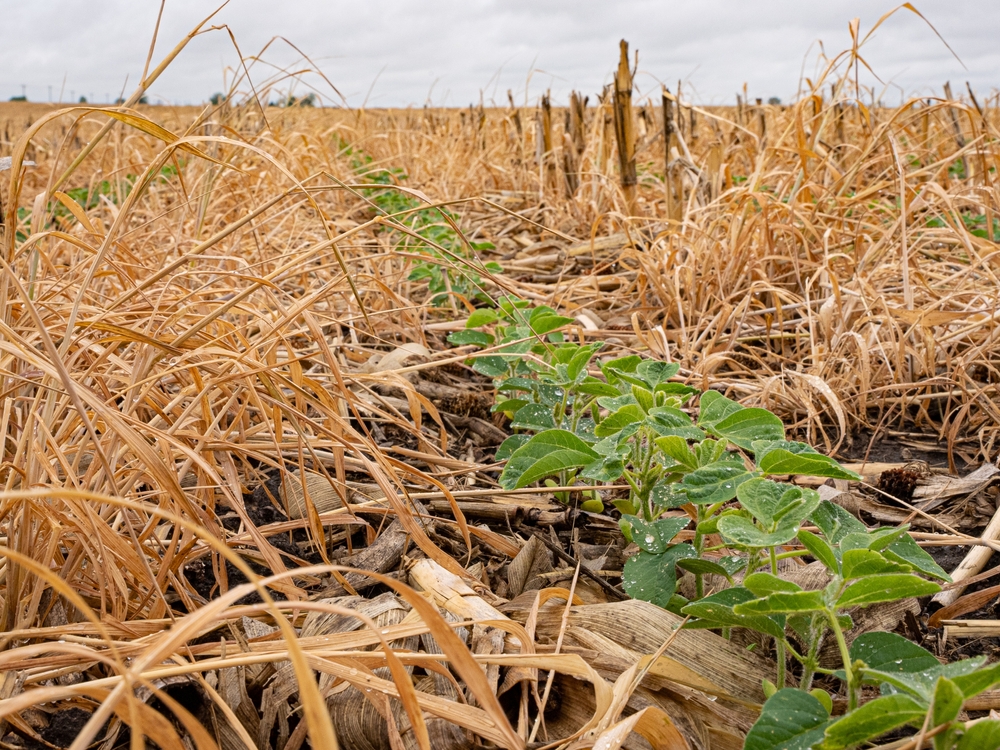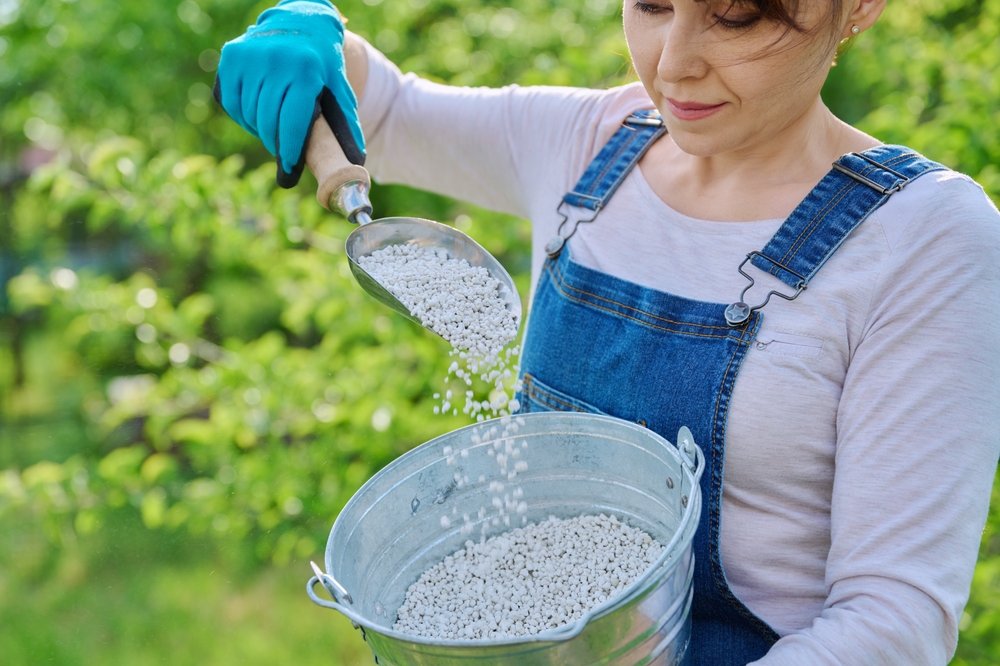
Image Source: Shutterstock.com
So, it’s the first warm day of spring, the snow has melted, and the scent of fresh earth fills the air. Farmers are gearing up, tractors are roaring to life, and hopes are high for a productive season. But here’s the kicker—some of the best spring yields actually start months earlier, before winter even hits.
The secret? Cover crops. These unsung heroes of modern farming are changing the game, and their impact on soil health, moisture retention, and overall productivity is nothing short of remarkable. If you’ve ever wondered how planting something just to plow it under could be such a big deal, you’re about to find out.
Feeding the Soil, Not Just the Crops
The magic of cover crops starts underground. When farmers plant clover, rye, or vetch in the off-season, they’re feeding their soil a buffet of nutrients that main crops will later feast on. Instead of letting fields sit barren and stripped of life, cover crops build up organic matter, adding nitrogen, carbon, and essential minerals back into the earth. This enrichment creates a living, breathing soil ecosystem that’s primed to support strong root growth when spring arrives. Think of it as giving the soil a healthy breakfast before the big workout of the growing season.
Battling Erosion Like A Pro
Bare soil is a magnet for erosion—rain, wind, and runoff can wash away valuable topsoil in just one storm. Cover crops act as the ultimate shield, locking the soil in place and protecting it from the elements. Their root systems knit the ground together, reducing the risk of losing that precious layer where all the fertility lives. Come spring, the field is intact, nutrient-rich, and ready to support seeds without missing a beat. The difference between a field that’s protected by cover crops and one left bare can be dramatic—one thrives, the other recovers.
Moisture Retention That Saves the Season
When it comes to farming, water is everything. Too much rain and you drown your plants; too little and you watch them wither. Cover crops help maintain that delicate balance by improving the soil’s structure, making it sponge-like and better able to hold moisture. In wet seasons, they reduce runoff and puddling, and in dry times, they keep water locked in longer where roots can reach it. This moisture management means fewer surprises and a more stable growing environment when those high-yield crops start pushing through in spring.
Natural Weed Suppression
Every farmer knows the pain of battling weeds that choke out valuable crops. Cover crops are like nature’s own weed-control strategy. Their dense canopy shades the soil, blocking sunlight from weed seeds that would otherwise sprout and compete for resources. Some varieties even release natural compounds that inhibit weed growth—a process called allelopathy—creating a cleaner, more manageable field by springtime. The result? Healthier crops, less manual labor, and fewer chemicals needed to keep invaders at bay.
A Home for Helpful Microbes and Insects
Cover crops don’t just feed the soil; they create a thriving habitat for beneficial life below and above the surface. Microbes, worms, and insects all find refuge and food in fields that stay active year-round. This bustling underground community breaks down organic matter into nutrients that plants can easily absorb. Plus, beneficial insects like ladybugs and pollinators stick around, creating a natural defense against pests. When spring planting arrives, your field isn’t just dirt—it’s a living ecosystem ready to support growth.
Reducing the Need for Synthetic Fertilizers
Here’s where cover crops truly earn their keep. Many species, especially legumes like clover or hairy vetch, have a superpower: they can capture nitrogen from the air and convert it into a plant-friendly form stored in the soil. When these crops are tilled under or decomposed naturally, that nitrogen becomes available to the next crop—cutting down on fertilizer needs. Less reliance on synthetic fertilizers means lower costs, reduced runoff pollution, and a cleaner, greener growing system. It’s sustainable farming at its smartest.

Image Source: Shutterstock.com
Boosting Soil Structure and Root Strength
Healthy soil isn’t just about nutrients—it’s about structure. Over time, compacted soil can suffocate roots and stunt growth, but cover crops help reverse that. Their roots penetrate deep, breaking up hard layers and improving aeration. This opens pathways for spring crops to send their roots farther down, tapping into deeper moisture and nutrients. A strong foundation equals stronger plants, and stronger plants equal better yields—simple as that.
Extending the Growing Season’s Energy
One of the best-kept secrets about cover crops is that they extend the vitality of your fields even when the main growing season is over. Instead of letting land sit idle, you’re harnessing every bit of sunlight, rainfall, and microbial activity to prep for the months ahead. By keeping photosynthesis active longer, cover crops ensure that energy keeps cycling through the soil instead of fading out. When you plant in spring, the soil feels alive—because it is alive. The result is faster germination, stronger early growth, and a head start on productivity.
Financial Gains Hidden in the Green
While the most visible payoff of cover crops is healthier soil and stronger yields, the financial benefits are equally impressive. Healthier soil means fewer inputs—less fertilizer, less irrigation, fewer pest problems. It also means more consistency in yields, reducing the wild swings that weather and poor soil health can cause. In the long run, farmers who adopt cover crops often find themselves saving money while improving sustainability. It’s the rare case where what’s good for the environment is also great for the bottom line.
Farmers Leading a Regenerative Revolution
Across the country, more farmers are discovering that cover crops aren’t just a trendy buzzword—they’re a cornerstone of regenerative agriculture. From small family farms to massive operations, growers are realizing that nurturing the land leads to better yields, healthier food, and a more resilient future. The momentum is building fast, with farmers swapping tips, experimenting with new mixes, and proving that nature often provides the best solutions. What started as a niche practice has turned into a movement, reshaping how we think about productivity and sustainability.
Cultivating the Future, One Cover Crop at a Time
The next time you see a field lush with winter rye or crimson clover, remember—you’re not looking at wasted space. You’re seeing preparation in motion, a farmer’s quiet investment in tomorrow’s success. Cover crops are the ultimate example of playing the long game, feeding the soil so it can feed us better in return. They protect, enrich, and prepare the ground for the bounty of spring, transforming good yields into great ones.
Have you used cover crops or seen the difference they make? Share your stories, insights, or field experiences in the comments below.
You May Also Like…
7 Cover Crops Every Garden Needs This Season
9 Fall Harvest Crops That Can Be Stored Without Refrigeration
10 Garden Tasks That Prevent Spring Weeds
7 Crops That Should Be Blanched Before Freezing
How Cover Crops Restore Soil After Summer Stress
Leave a Reply